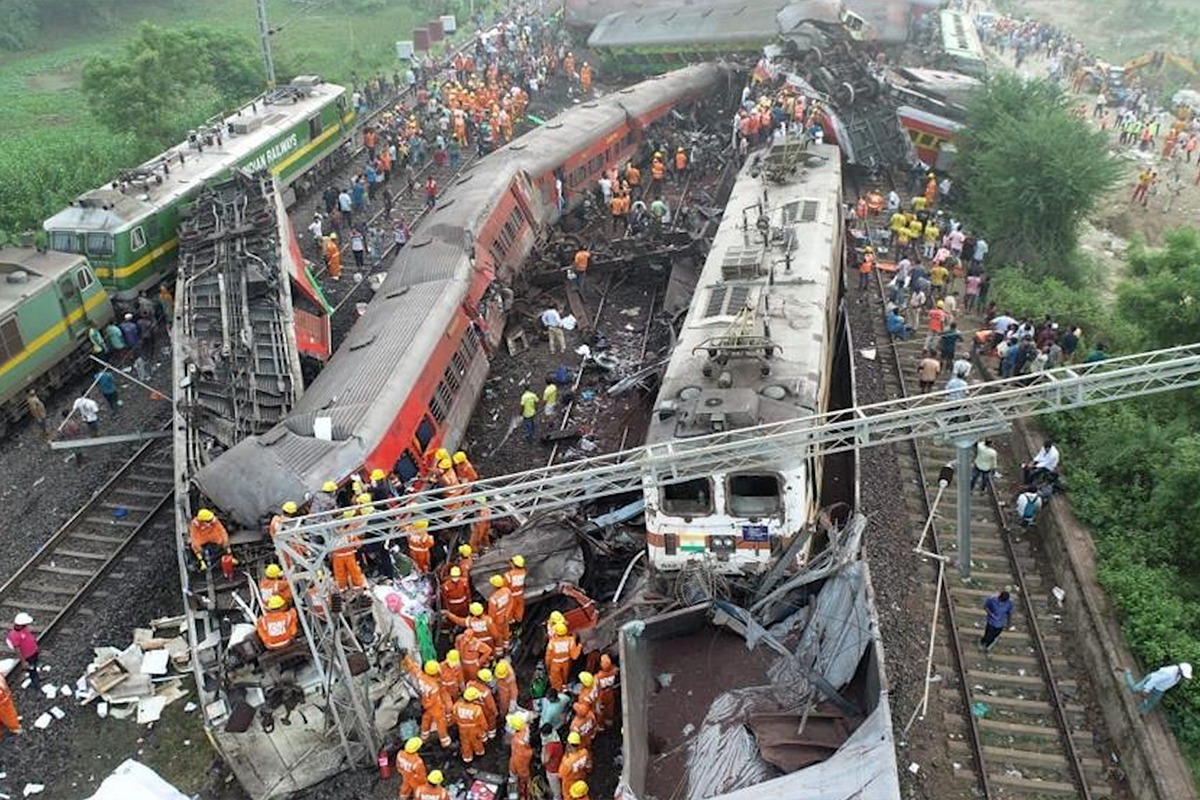NEW DELHI: The Central Bureau of Investigation (CBI) on Friday arrested three railway employees in connection with the devastating Balasore train tragedy that resulted in the loss of over 250 lives.
The individuals have been charged under Section 304 of the Indian Penal Code (IPC) for culpable homicide not amounting to murder. Additionally, the CBI has accused them under Section 201 of the IPC of causing the disappearance of evidence of an offence or giving false information to screen offenders.
The arrested railway employees have been identified as Arun Kumar Mahanta, Md Amir Khan (junior section engineer), and Papu Kumar (technician).
ALSO READ: Warning ignored? Serious signalling system flaws exposed months before Odisha train tragedy
The CBI assumed control of the investigation into the Balasore train crash on June 6, following the tragic incident that occurred on June 2. The collision involved two passenger trains and a goods train, claiming the lives of 278 individuals and leaving over 1,100 injured. Furthermore, the accident disrupted the movement of both goods and passenger trains along the busy route.
The recent arrests come after Union Minister Ashwini Vaishnaw stated that the “root cause” of the accident and the individuals responsible for this “criminal” act had been identified. Railway officials have also suggested the possibility of sabotage and tampering with the electronic interlocking system, which is responsible for detecting the presence of trains, as potential factors contributing to the accident.
The tragedy prompted a high-level inquiry, which revealed that “wrong signalling” played a key role in the Balasore train accident.
ALSO READ: Balasore train accident: Odisha GRP say ‘death by negligence’ in FIR
The inquiry report, submitted by the Commission of Railway Safety (CRS) to the Railway Board, pointed out several lapses in the signalling and telecommunications (S&T) department. It emphasised that the tragedy could have been prevented if past warning signs had been reported and addressed.
According to the report, the S&T staff at Bahanaga Bazar, the location of the accident, could have taken remedial actions if they had been informed about the “repeated unusual behaviour” of switches connecting the parallel tracks.
The report also highlighted the non-supply of station-specific approved circuit diagrams for replacing the electric lifting barrier at level crossing gate 94 at Bahanaga Bazar station, which resulted in incorrect wiring.
ALSO READ: Railway Minister Ashwini Vaishnaw recommends CBI inquiry into Balasore tragedy
Furthermore, the report mentioned a similar incident on May 16, 2022, at Bankranayabaz station in the Kharagpur Division of the South Eastern Railway, which also involved wrong wiring and cable faults.
The report emphasised that if corrective measures had been taken after this incident to address the issue of wrong wiring, the accident at BNBR could have been prevented.
In addition to the lapses in signalling and telecommunication, the CRS report highlighted the need for a faster initial response to such disasters. It advised the Railways to review the system of disaster response in the zonal railways and improve coordination with disaster-response forces such as the National Disaster Response Force (NDRF) and State Disaster Response Force (SDRF).
YOU MAY ALSO LIKE
The CRS report concluded that the rear collision was a result of lapses in the signalling circuit alteration carried out in the past and during the execution of the signalling work related to the replacement of the electric lifting barrier at level crossing gate 94. These lapses led to incorrect signalling for train no. 12841, causing it to traverse on the UP loop line and eventually collide with the goods trains.
To prevent such incidents in the future, the CRS made several recommendations. It suggested launching a drive to update completion signalling wiring diagrams, ensuring the use of approved circuit diagrams for any alterations, and deploying a separate team to check and test modified signalling circuits before restoration and reconnection of the work.
YOU MAY ALSO LIKE










